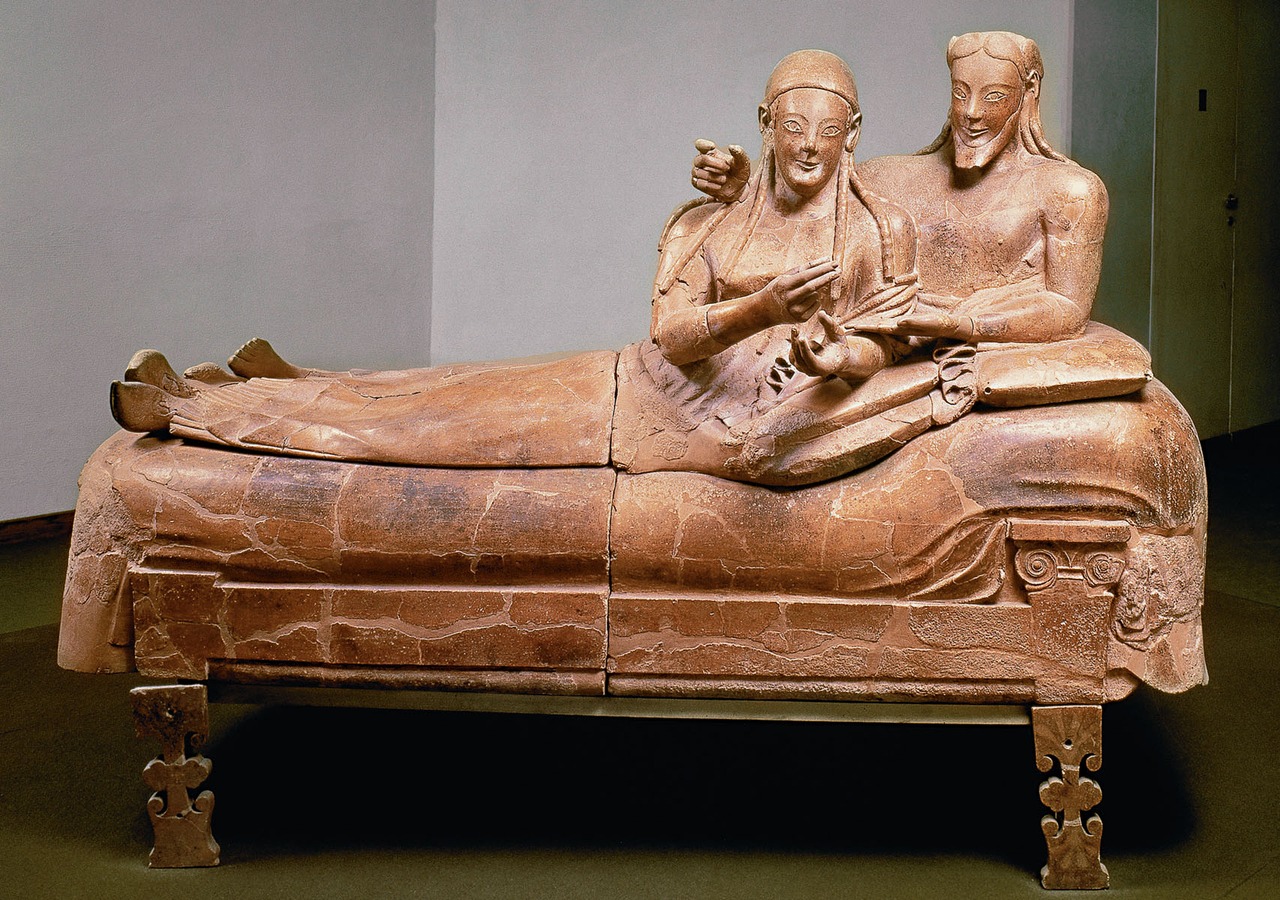The old saying goes “when in Rome do as the Romans do” but for all intents and purposes to describe Roman art it would honestly be appropriate to say that the Romans did as the Etruscans did. Roman art is very reminiscent of the earlier Etruscans who controlled Italy before the Romans did. Saying that the Romans did as the Etruscans is not entirely fair of me to say because the Etruscans had their influences as well, good thing artists were not required to sign help received statements or this post would probably go back to discussing Prehistoric art by the logic that everything is somehow influenced by whatever precedes it. In summation this blog post will discuss the influence of Etruscan art on Roman art noticeably in their similar Egyptian and Greek contacts.
The Etruscans had noticeably Egyptian and Greek influences. Vitruvious observes a handful of similarities in Etruscan architecture to that of the Greeks in noting the use of “post-and-lintel structure and gable roofs” (Stokstad 139). The distinction in Etruscan and Greek architecture was Etruscan’s columned porch that was a departure from the characteristically uniformly stepped stereobate and continuous peristyle colonnade that would serves as the entrance to Greek temples. Etruscan’s did share the same gods as the Greeks but typically did not depict them nude as was the Greek canon. below is a picture of Apollo from the Temple of Minerva that shows both Greek influence as well as a departure from it. The “archaic smile” is reminiscent of early Greek sculptors but the movement in the pose of Apollo is noticeably more dynamic then the rigid kouroi pose of early Greek art. The dymanic pose and sense of movement is characteristic of Etrucsn art.
Burial chambers are evidence of the culmination of Greek and Egyptian influences on Etruscan art. The tombs of the Etruscans reflected the atrium characteristic in the architecture of their households that often had shallow pools and leisure luxuries. The practice of depicting household commodities seems similar to the Egyptians burying themselves with all the necessities of life that they thought they would be able to take with them into death’s afterlife. If the geometric fixated paintings and figurative representations of entertainment and meals were not already indicative of both Greek and Egyptian influence then Etruscan sarcophagi will surely convince you.

As so far I have discussed Etruscan arts’ influences but Roman art was very much inspired by the Etruscans. The Romans copied the adoption of Greek sculpting styles except noticeably more in keeping with later Greek works rather than the Etruscans preference for early Greek and Egyptian inspiration. Sculptures of the roman era as dynamic and fluid as later Greek works and are not only naturalistic but very idealistic in terms of their representations of the human form.